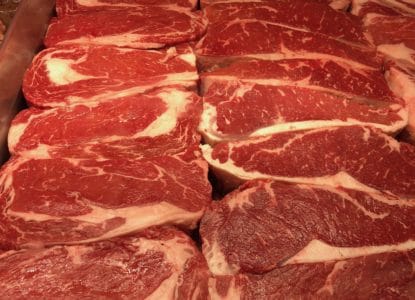When You Have Lactose Intolerance is Dairy Still an Option?
Article at a Glance
- The short answer is “yes- you can still eat some dairy with lactose intolerance – but it depends on the type.” This is because nutrition is such an individualized practice. What works for one person may not work for another.
- Some very hard cheeses, like parmesan and cabot, have very little lactose and may still be tolerated by those with lactose intolerance.

Contents
Lactose intolerance is one of the most common food intolerances and sensitivities that can start in early childhood.
Lactose intolerance in adulthood is extremely prevalent as well. It is estimated that on average about 65-75% of adults are lactose intolerant and there is a strong genetic component.
Lactose is the sugar that is found in animal based milk and dairy products. The inability to digest this sugar is called lactose intolerance. The enzyme lactase is produced in the intestinal lining and breaks down lactose. When you do not have enough lactase to break down lactose, you become symptomatic, mostly with digestive issues.
Common symptoms of lactose intolerance include but are not limited to: diarrhea, stomach pain, gas, bloating and nausea. This can occur anywhere from 30 mins to 2 hours after consumption.
Different types of lactose intolerance
Congenital lactase deficiency is rare but can occur in infancy. This is when the child is born without sufficient lactase and cannot digest lactose in breastmilk or formula. This is typically diagnosed from digestive issues such as diarrhea. This form of lactose intolerance is genetic and the child will need to be nourished by lactose free formula.
Primary lactose intolerance is the most common form in adulthood. As an infant receiving all or most of their nutrition from breastmilk or formula, the child’s body produces enough lactase to properly digest the lactose. As we get older, and no longer rely on milk products for the substantial part of our diets, lactase production steadily declines, and continues to decline into adulthood. The reduction of lactase production is directly related to reduction of lactose in the diet, therefore, the less we consume the less enzyme we create.
Secondary lactose intolerance is characterized by a decrease in lactase production following an illness, disease, or even surgery that affects the small intestines. Some common diseases that may be associated with this type of lactose intolerance include: celiac disease, Crohn’s disease, dysbiosis, cancer treatment, and antibiotic use. Correcting the imbalance and healing the intestinal lining can be helpful in improving lactase production and minimizing symptoms of lactose intolerance. In some cases this type of lactose intolerance is only temporary, but may become permanent if the intestinal lining was permanently damaged or due to a long term illness.
Who is affected by lactose intolerance?
Lactose intolerance is extremely prevalent. Research shows that all land mammals experience a normal and significant decrease in lactase enzyme after weaning.
Studies estimate that about two-thirds of the world’s population is lactose intolerant. Although this affects most of the world, there is still a wide variation between geographical regions. All humans lose approximately 90-95% of the lactase they were born with by early childhood, followed by a continuous decline throughout life.
The most affected regions are Asia, the Middle East and Africa at 70-95% of population. Northern Europeans had low prevalence around 10-28% of the population.
Lactose intolerance or other gastrointestinal issues?
Most gastrointestinal issues have similar symptoms such as nausea, vomiting, constipation, diarrhea, and pain. So it can be easy to determine the cause of these symptoms since lactose intolerance also shares these common GI symptoms.
Just as with hidden gluten, many foods contain hidden lactose. So if you are experiencing digestive issues and you think that you may be lactose intolerant, I suggest keeping a food journal for a few days to pinpoint the issues. In addition to milk, cheese, yogurt, and ice cream other foods that may contain lactose:
- Chocolate
- Cakes
- salad dressings
- packaged foods
- pastry items
- deli meats
However, if you do not notice a clear pattern of digestive symptoms after eating lactose-containing foods, working with a qualified provider can help you identify the cause of your digestive issues.
In addition to a food journal and tracking symptoms for a few days there are clinical tests to confirm lactose intolerance. One of the most common tests that a provider may run is a breath test that measures either hydrogen or lactose.
Treatment of lactose intolerance
There is no cure for lactose intolerance therefore, the best treatment is avoidance. However, there are some other caveats to take into consideration.
A study from Purdue University suggests that consuming milk products can actually re-build tolerance for lactose by gradually increasing production of lactase. These studies have found that moderate controlled consumption of lactose containing products (half-glass of milk) on a full stomach was beneficial in increasing tolerance for lactose products in individuals with lactose intolerance. In this case this should be done very gradually, in small amounts over time to build tolerance.
Low lactose options
Some people may find that they can tolerate certain types of dairy but others cause major symptoms. A contributing factor here could be the amount of lactose in each dairy product.
Dairy products that are naturally lower in lactose are better tolerated. Some dairy products that contain less lactose include:
- Butter
- Ghee
- Hard cheese such as cheddar, parmesan, and swiss cheese
- Live probiotic yogurt
- Kefir
- Fermented dairy
- Whey based protein powders
I find this to be true for many of my patients that are lactose intolerant. They can often handle hard cheese and yogurt, but find milk and ice cream to be more problematic. The intensity of symptoms will vary greatly from person to person. So it’s important to listen to your body to choose the method that works best for you.
Digestive enzymes for lactose intolerance
For those that have a hard time digesting even low-lactose milk products there are still ways to support digestion.
These individuals can take a digestive enzyme that contains lactase before eating any meal or food that contains milk products. This will allow your body to better break down the lactose and absorb nutrients. Even in more pronounced cases of lactose intolerance, this should be well managed with digestive enzymes.
Lactose free options and alternatives
However, if you decide that you don’t want to take enzymes every time you eat or drink milk products there are some dairy free options that are available to reduce your overall lactose intake.
I recommend lactose free dairy products that are widely available as well as plant based options. Many brands now sell nut and seed based cheese and dairy products. Such as almond or macadamia nut milk, cashew based cheese and yogurt, or even oat milk based ice cream treats.
Eliminating dairy may seem scary to some people especially when it comes to nutrient intake. We often associate milk products with the necessity of adequate calcium intake. While dairy products do provide calcium, many other foods do as well. So if you decide to eliminate dairy completely, plant based dairy-free products along with a nutrient dense diet will provide adequate intake of calcium and other nutrients.
The Key Takeaway- Can you still eat dairy?
Lactose intolerance is extremely prevalent due to depleting lactase enzyme levels in adults as we age.
The short answer is “yes- you can still eat some dairy with lactose intolerance – but it depends on the type.” This is because nutrition is such an individualized practice. What works for one person may not work for another.
Those with lactose intolerance may choose to avoid dairy products and instead consume plant based alternatives.
However, it is not always necessary for individuals with lactose intolerance to avoid all dairy products. Dependent on symptoms, some may be able to enjoy low-lactose foods or even rebuild lactose tolerance by consuming dairy products daily.
If symptom duration and intensity is due to underlying issues, those experiencing lactose intolerance can improve symptoms by supporting overall digestion with a high quality digestive enzyme.
Overall, even for those with lactose intolerance, certain types of dairy are well tolerated in moderation.



